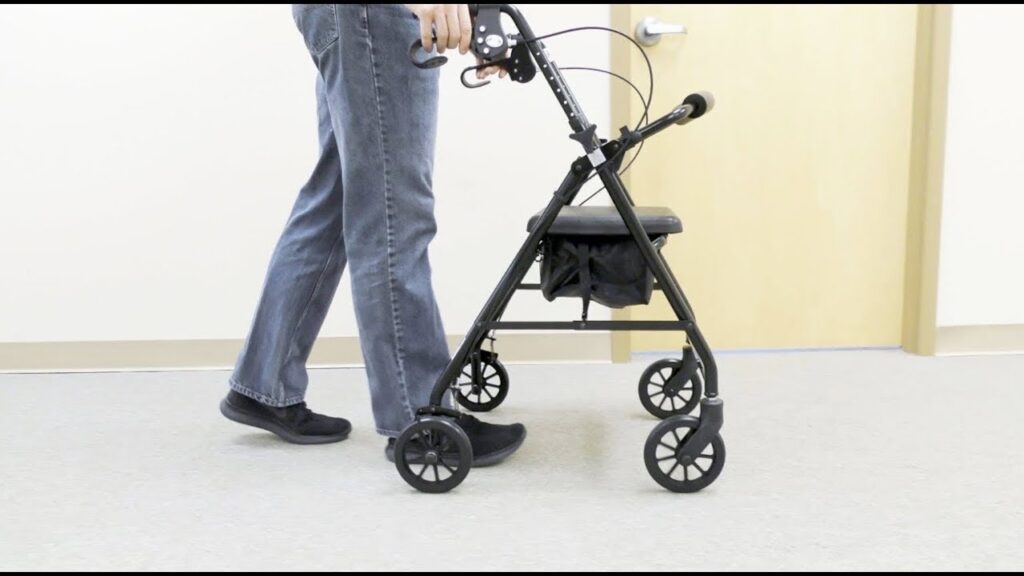While it’s inevitable that we’ll all lose some mobility as we get older, those of us dealing with obesity tend to see it happen sooner and more severely. Since more than a third of adults aged 65 and over fall each year, the fear of falling is a legitimate issue. The good news is that there are a number of tried-and-true methods for assisting those with bariatric needs in staying upright and moving around with more ease. A bariatric walkers or rollator can assist obese persons to regain mobility by providing stability, balance, and walking support; the VHA and other medical specialists and organizations recommend these devices. Keep reading to discover all the ways in which one of these trendy mobility aids might improve your daily life.
Finding the Right Walking Aid for You
There are a wide variety of mobility solutions available, which can make selecting the best walking aid for you or a loved one difficult. In order to make your search for walking assistance more manageable, we’ve included some hints below.
Click here – Education Policy and Leadership: How to Create an Impact in the Education Sector
Basic Walker (without wheels)
This is the most typical walker, and it comes in both bariatric (extra-heavy duty) and junior (lower weight) versions. You should keep these in the house. The most stable option for folks who just need a little aid getting around are simple walkers because they don’t have wheels.
Wheeled Walkers
Simply said, these are rollators converted to the form of walkers. The wheels make it simpler to move around when you’re outside. The walkers that include two wheels up front are what we call “wheeled walkers” on our site. Fixed wheels don’t swivel to allow for easy movement in either direction. Those who need assistance crossing uneven ground might benefit from using a wheeled walker.
Rollators
Wheeled walkers, also known as rollators, have wheels on each of the four legs. With many variants featuring swivel wheels and hand brakes, rollators provide the most maneuverability and range of motion. The maximum freedom may be had with a rollator that has bigger wheels. Many modern models of rollators have a seat and storage bins, making them ideal for persons who are frequently on the go.
Canes
Stability is maximized while using standard walkers. If you only need a little bit of assistance, though, a cane might be the answer. Canes are useful because they make it easier to get up from a chair and keep your balance. Different canes have different types of handles, and some are foldable for easier transport. The new gel-grip handle is a popular choice due to its ergonomic design and adaptability to a variety of gripping styles. Having a cane that folds up neatly for transport and storage is something to think about.
Click here – Winter fruits men must have
Other Features To Consider
Foldability and Portability
The majority of bariatric walkers and rollators have folding designs that make them simple to transport in a car. It’s important for users who get out of the house frequently to pick a gadget that won’t take up too much room in the car and can be easily carried from one location to another. Bariatric rollators can weigh anything from 15 to 30 pounds, making them significantly heavier than normal walkers. You or your caregiver must be able to securely lift the device into and out of the vehicle.
Handle Height
One of the most variable and crucial parameters for a bariatric walker or rollator is the height of the handle, which may make a world of difference in terms of comfort. If you’re taller or shorter than average, you can have back pain and strain if you hold the handle too high or slouch over the device too far. Make sure the handles of your walker or rollator are at the perfect height for you. If the user is unable to alter the height, they should stand with their arms at their sides to determine the most comfortable position. Take a measurement from the inside of your wrist to the floor to find out how high you should set the handle.
Storage
Many standard walkers and rollators include an attached basket, bag, or folding pouch for transporting personal belongings or shopping bags. These containers aren’t only great for storing household goods; they can also be used to safely and securely house delicate medical instruments.
Final Thoughts
Living with obesity can make it difficult to move around freely due to decreased mobility, overworked joints, and a general lack of fitness. To aid bigger persons in walking and getting around more securely and comfortably, doctors often suggest bariatric walkers or rollators.
Obesity affects about 42% of American adults, making it a very prevalent health problem here. Bariatric people already have a greater risk of cardiovascular illness, stroke, and type 2 diabetes; now they also face an increased chance of falling.
A bariatric walker or bariatric walker rollator can help individuals with obesity maintain their balance and stability while walking. Because to them, people’s mobility is improved, which is good for their health and their quality of life. These common mobility aids come in a broad range of configurations, allowing you to pick the one that’s most suited to you or your loved one, including those with more robust bracing, more robust construction, larger wheels, and a wider distance between the grips.
